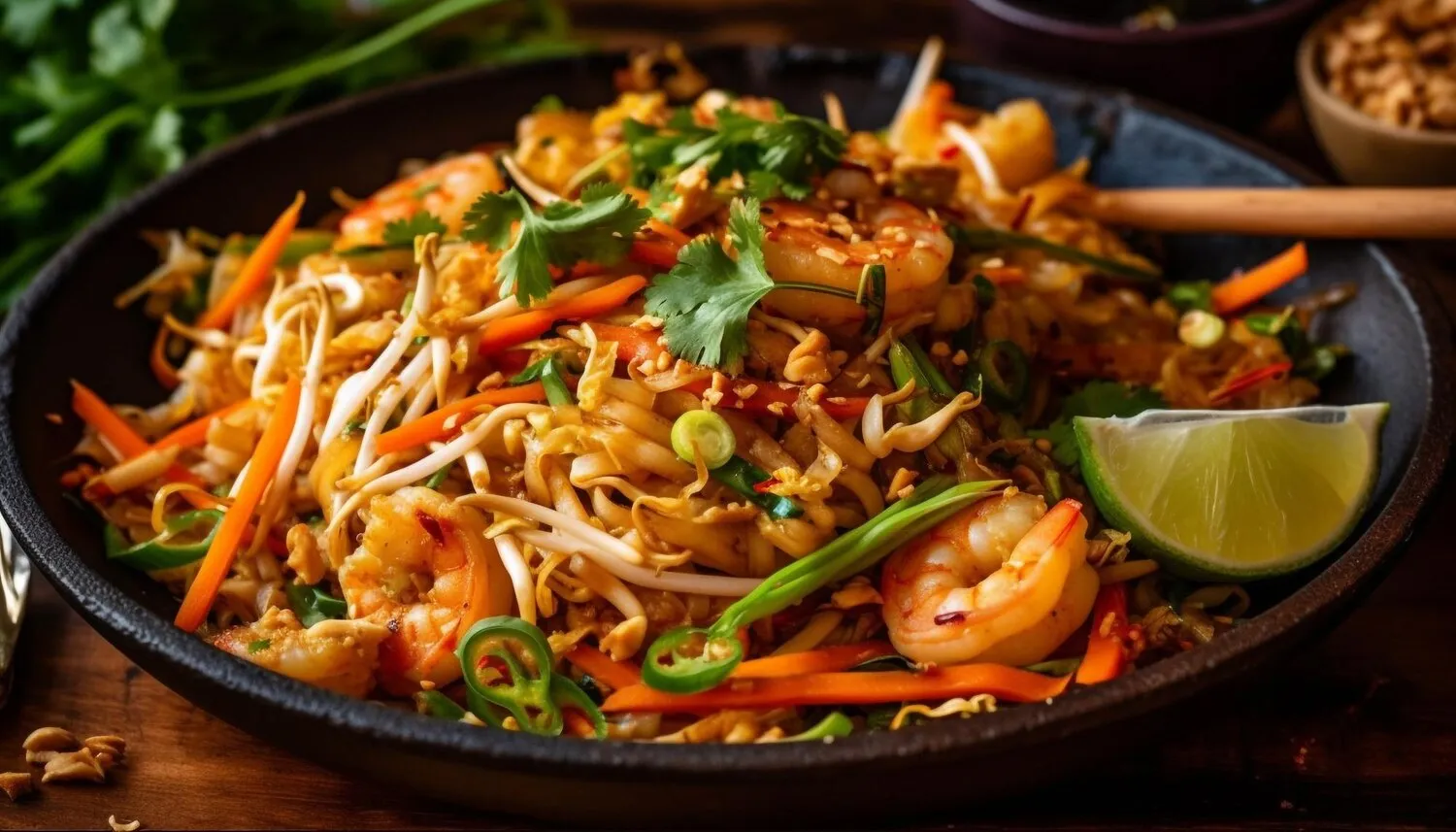
Spicy Seafood Udon
Udon noodles in a spicy seafood broth, topped with mussels, prawns, and squid
Nutrition Facts
* The % Daily Value (DV) tells you how much a nutrient in a serving of food contributes to a daily diet. 2,000 calories a day is used for general nutrition advice.
Udon noodles have a long history in Japan, possibly introduced from China during the Nara period (710-794 AD). The incorporation of seafood into udon dishes reflects Japan's island geography and rich fishing traditions. While a specific 'spicy seafood udon' doesn't have a singular historical origin, it represents a modern adaptation, blending traditional udon with bolder, more global flavors.
While Spicy Seafood Udon is a relatively modern creation, it reflects Japan's embrace of diverse flavors and its ability to adapt traditional dishes to contemporary tastes. It highlights the importance of seafood in Japanese cuisine and the growing popularity of spicy flavors.
Seafood in Japanese Cuisine
Seafood plays a vital role in Japanese culinary traditions, reflecting the country's proximity to the ocean and its reliance on marine resources. Various seafoods are used in dishes, and udon broth is commonly enhanced with seafood flavour.
Noodle Culture
Noodles, including udon, ramen, and soba, are staple foods in Japan, enjoyed in various forms and preparations across the country. They are often eaten as a quick and satisfying meal.
Adaptation and Innovation
Japanese cuisine is constantly evolving, incorporating new ingredients and techniques while maintaining a respect for tradition. Spicy Seafood Udon is an example of this adaptability.
Spicy Seafood Udon boasts a complex flavor profile, balancing savory seafood notes with a fiery kick and umami-rich broth.
The dominant flavors are derived from the fresh seafood (mussels, prawns, squid), the savory and umami-packed dashi-based broth, and the spice elements (gochujang, togarashi, or other chili-based ingredients). The chewy udon noodles provide a satisfying textural contrast. Depending on the recipe, there might be supporting flavors from garlic, ginger, soy sauce, mirin, and sesame oil.
Freshness is Key
Use the freshest seafood available for the best flavor and texture. Look for vibrant colors and a clean, ocean-like scent. Avoid seafood with a fishy or ammonia-like odor.
Broth Matters
A well-made dashi broth is the foundation of the dish. You can use store-bought dashi powder, but homemade dashi using kombu (kelp) and katsuobushi (dried bonito flakes) will provide a richer, more complex flavor.
Spice Level Control
Adjust the amount of chili paste or other spice ingredients to your preferred heat level. Start with a small amount and add more gradually until you reach the desired spiciness.
Noodle Preparation
Cook the udon noodles according to package instructions. Avoid overcooking, as they can become mushy. Rinsing the noodles after cooking helps to remove excess starch and prevent them from sticking together.
Garnish with Flair
Garnish with fresh herbs such as scallions or cilantro, a sprinkle of sesame seeds, or a drizzle of sesame oil for added flavor and visual appeal.
Explore additional Noodles dishes and restaurants
Explore NoodlesDiscover top dining spots and culinary experiences in Aberdeenshire.
Explore AberdeenshireLearn more about the food culture, restaurant scene, and culinary heritage of Scotland.
Explore Scotland